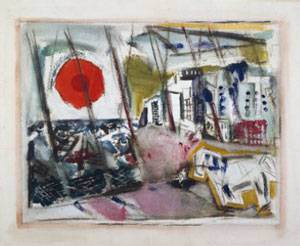
Franz Xaver Messerschmidt
The Ill-Humored Man and Portrait Bust of Empress Maria-Theresa
© 2004 Musée du Louvre / Pierre Philibert – Österreichische Galerie, Belvedere, Vienna

Franz Xaver Messerschmidt
The Artist as He Imagined Himself Laughing
© Bruxelles, Photo d’Art
Franz Xaver Messerschmidt exhibition at the Louvre For the first time in France, the Louvre presents a monographic exhibition devoted to the Bavarian-born Austrian sculptor Franz Xaver Messerschmidt (1736–1783), active in Vienna and Pressburg (now Bratislava) in the late 18th century
January 28–April 25, 2011
]]>
Source: Louvre Museum, Paris
The exhibition comprises some thirty works, including the headacquired by Louvre in 2005, which is joined by exceptional loans fromseveral German museums, the Belvedere and the LiechtensteinMuseum in Vienna, the Metropolitan Museum of Art in New York, theJ. Paul Getty Museum in Los Angeles, the Victoria & Albert Museumin London, museums in Budapest and Bratislava, and privatecollections. This event is part of a special series this season at theLouvre celebrating the 18th century
Apprenticed at the age of ten to his uncle, Johannes Baptist Straub, arenowned sculptor in wood active in Munich, Franz Xaver Messerschmidtmoved to Vienna in 1755 and enrolled at the Academy of Fine Arts.Working at the Arsenal, he became proficient in metal sculptingtechniques. In 1765, Messerschmidt traveled to Rome for several months,and upon his return executed a series of spectacular portraits of the imperialcouple and other major figures of the Viennese court, such as Prince JosefWenzel I of Liechtenstein.
Appointed as adjunct professor of sculpture at the Academy in 1769, hecontinued to pursue his illustrious career as a portrait sculptor whileteaching, through busts depicting prominent Enlightenment thinkers inVienna. Messerschmidt’s enthusiastic zeal was cut to the quick when theAcademy’s council of professors decided, with the consent of the StateChancellor, to award the coveted title of full professor to another facultymember. Severely discomfited and angered by this failure, which had beengrounded in a perception among the authorities and his peers thatMesserschmidt was mentally unbalanced, the sculptor left Viennadefinitively on May 9, 1775. Following a brief return to his Bavarian roots,Messerschmidt was taken in by his brother in Pressburg (today Bratislava),at that time the Hungarian capital. There he worked exclusively on theseries of busts he had begun in Vienna, known since the artist’s death as“character heads”, which were produced without commissions. Sculpted inmetal (using alloys composed largely of tin and/or lead) and in alabaster,these heads convey the expressiveness of a master sculptor keen to depictthe torments of the soul in all their extreme emotional variety.
Follow us on:


